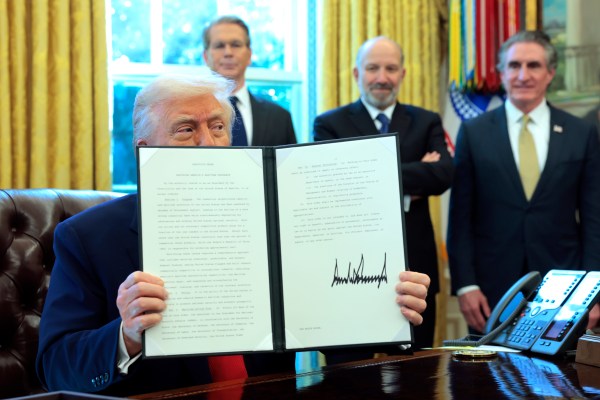There is something exciting about discovering, for the first time, a wonderful author, artist, or composer of whom you were previously unaware. To realize that this neglected novel or that underappreciated painting was out there all along, just waiting to be enjoyed by you, and now, suddenly, you have stumbled upon it, is like being the recipient of an unexpected gift. The thrill derives in part from becoming an insider, one of those select few who are (now) “in the know.” But there is nothing exclusive about the emotion, no wish to keep the discovery a secret for yourself. To the contrary, one feels immediately driven to share the news—to pass the book along to a family member, to send a friend a picture of the painting, to share the recording. We intuitively sense that a great work of art is a possession of all humanity, and the joy of encountering it is increased, not diminished, when it is shared with others.
I recently had an experience of this sort when I visited the Dulwich Picture Gallery (DPG) in south London to see the exhibition “M.K. Čiurlionis: Between Worlds,” which is concluding this weekend. (If you happen to be in London, hop online and grab one of the last tickets before they’re gone.) The gallery is worth a visit in its own right. Originally designed in 1811 by Sir John Soane, one of England’s finest architects—whose own London home is now the delightfully eccentric Sir John Soane Museum—it was “the world’s first purpose-built public art gallery,” to quote its website. Soane’s innovative design incorporated natural light from above to help visitors view the collection, housed in five linked galleries, adjoined by a mausoleum that holds the graves of the DPG’s founders. Carefully rebuilt after extensive bombing damage in World War II, the gallery’s impressive holdings include works by Rembrandt, Rubens, Poussin, Canaletto, Ruisdael, and others. Bartolomé Estéban Murillo’s Virgin of the Rosary is one of the loveliest Madonnas I know; Rubens’ equally eye-catching but much more worldly Venus, Mars, and Cupid shows the voluptuous, lightly garbed goddess playfully squirting a fountain of milk from her breast into the open mouth of young Cupid, while the god of war, wearing his armor, looks on admiringly.
I was there in late February to see none of these, however, but rather to learn about an artist I had never heard of in my life: the Lithuanian M. K. Čiurlionis, who lived from 1875 to 1911, dying of pneumonia at a tragically young age, with his creative powers in full bloom. Čiurlionis originally trained as a composer, with considerable success; some of his roughly 400 compositions, late Romantic in style, are available on YouTube for the curious listener. But in the early twentieth century, over the last seven years of his life, Čiurlionis turned his attention primarily to painting. In a remarkable burst of creative activity, he produced more than 300 works of art, of which just over 100 can be seen in the DPG exhibition.
It is perhaps not entirely surprising that I was unfamiliar with Čiurlionis. According to the exhibition catalog, his work has rarely traveled outside his native Lithuania and has been shown at only a few exhibitions, in Paris, Milan, and near Tokyo. That is a shame, because I was, quite frankly, blown away by what I saw. The first thing that strikes the viewer upon entering is Čiurlionis’s use of color. Some of the first paintings, like the diptych Rex, a pair of sketches for stained glass, or the 13-painting sequence Creation of the World, jump out for their use of bold, eye-catching color. The palette changes as one proceeds through the exhibition, shifting toward more muted earth tones before becoming more colorful again in some of the final paintings.
Those early paintings also introduce some of the standard iconography that appears throughout the exhibition. The aged, kingly figure of “Rex,” who appears like something from a fairy tale, recurs in a number of paintings, sometimes in the form of landscape features like mountains that bear a human likeness. The catalog points out the similarity between Rex and a popular Lithuanian image of the “pensive Christ” or “Christ in distress,” which links earlier, pagan imagery with Christian belief, a combination that also permeates the work of Čiurlionis. Creation of the World, a sequence of 13 paintings, is a fine example: it bears obvious similarities to the creation narrative of Genesis, but the gradually emerging landscape appears to be not our own world, but rather a fantastic landscape of strange, rhythmic plants. A serpent appears, but there are no humans.
Other frequently repeated images include the sun, moon, stars, and planets; angels; rivers and mountains; and geometric figures such as triangles and circles. These come together especially effectively in several Sonata sequences that Čiurlionis painted, works in which his musical and visual interests merge. Sonata of the Stars, for instance, consists of two paintings, labeled Allegro and Andante, respectively. In the Allegro, a pyramidal, mountain-like shape appears to be bursting forth from a sea filled with stars and planets, afloat in a series of waves like notes swimming in musical staffs. The mountain soars through a narrow band of night sky filled with stars; an angel stands atop its peak, directly before a rising sun, and in the upper left corner a small Rex-like figure appears to kneel in supplication. In the Andante, the narrow band of night and stars continues. Beneath it, a single large planet now appears to float in a sea or sky, with a river of blue stars streaming diagonally toward the top of the painting; a shadowy angel strides atop the band, before a pyramid, with more faint angels off to the upper right.
This harmonious merger of earth and sky, sea and stars, rivers and planets, pagan legend and Christian symbolism, nature and the stylized architecture of pyramids or temples, fairy tale and reality—in sum, the bringing together of heaven and earth—is perhaps the single most powerful impression conveyed by the exhibition as a whole. Heaven and earth come together, however, in a cosmos that is at one level universal but at another Lithuanian. Sometimes this is evident even to the uneducated viewer like myself. Raigardas, for example, another triptych—Čiurlionis’s fondness for diptychs, triptychs, and longer sequences of paintings suggests his interest in pictorial storytelling—depicts an actual river valley near Druskininkai, where Čiurlionis spent much of his life. Similarly, the later and more fantastical Prelude (The Knight Prelude) shows a knight astride a white horse, flying through the sky before a representation of the city Vilnius. Čiurlionis was deeply committed to the struggle for Lithuanian independence, and in paintings like these his native pride shines through. The catalog is helpful in drawing attention to less obvious gestures toward his Lithuanian heritage: animal symbolism, folktales, or legends to which Čiurlionis alludes in his work.
Čiurlionis’s synthesizing temperament appears also in his ability to move between abstraction and representational painting. Some have suggested that he should be considered the first abstract painter and may have supplied inspiration for Kandisky’s early abstract works. Even if that controversial claim is false, a sequence of eight paintings like Winter moves from semi-representational images in the early scenes to almost entirely abstract ones by the end, relying heavily on light, shade, and color to convey an impression of a cold, dormant landscape. Even more striking is Silence, a small work on paper, largely unpainted, in which a trio of dandelions perches on a small sliver of ground with nothing else around but a few faint indications of color in a brown-gray sky.
Yet Čiurlionis’s career was not simply a move toward abstraction. Many of the last paintings are again representational. Two of my favorites, both painted in 1909, come at the very end of the exhibition. With another burst of color, Angels (Paradise) and Angel (Angel Prelude) provide a lovely pair of images to contemplate as one exits this remarkable show. In the former, a dozen brightly colored angels gather wildflowers amid butterflies in a blooming meadow, or ascend and descend a large staircase facing the seashore, with clouds floating overhead in a blue sky. One can imagine wading out of that sea, being greeted by the angels, picking a small bouquet, and climbing the stairs up to heaven. In the latter painting, a prominent feminine angel sits thoughtfully upon a mountaintop, while in the background more angels move along a series of bridges and stairways. In both paintings, earth and heaven seem closely joined, with a lively intercourse going on between them.
I find it astounding that Čiurlionis produced this richly diverse yet thematically unified body of work in so short a time span. One can only imagine what he might have gone on to do had more years been permitted him. But what a treasure to have the works we do, and what a gift for Dulwich Picture Gallery to have helped them gain an audience. M. K. Čiurlionis may have drunk deeply at the well of his native Lithuanian culture for inspiration, but his paintings speak a universal language.





Please note that we at The Dispatch hold ourselves, our work, and our commenters to a higher standard than other places on the internet. We welcome comments that foster genuine debate or discussion—including comments critical of us or our work—but responses that include ad hominem attacks on fellow Dispatch members or are intended to stoke fear and anger may be moderated.
With your membership, you only have the ability to comment on The Morning Dispatch articles. Consider upgrading to join the conversation everywhere.